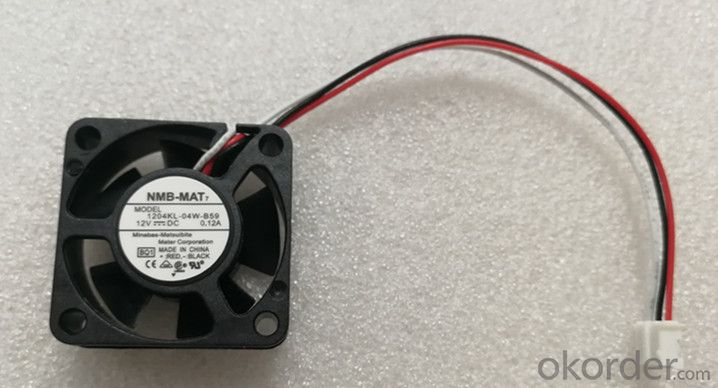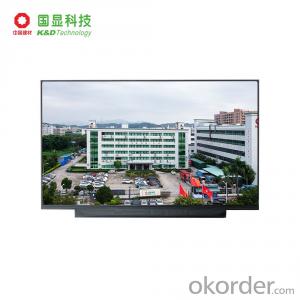Variable Frequency Fan NMB-MAT7 Radiator Brand New Model Made In China
- Loading Port:
- Shanghai
- Payment Terms:
- TT OR LC
- Min Order Qty:
- 1 kg
- Supply Capability:
- 1000 kg/month
OKorder Service Pledge
Quality Product, Order Online Tracking, Timely Delivery
OKorder Financial Service
Credit Rating, Credit Services, Credit Purchasing
You Might Also Like
Item specifice
color:
black
function:
dissipate heat
The working principle of the cooling fan is realized according to the energy
conversion, namely: electric energy → electromagnetic energy → mechanical
energy → kinetic energy. The circuit principle is generally divided into
various forms. The performance of the fan will be different with different
circuits.
Bearing structure
brief introduction
The common bearings of cooling fan are: ball bearing, oil bearing and magnetic
bearing.
Ball bearing
Ball bearing changes the friction mode of the bearing and adopts rolling
friction. There are some steel balls or steel columns between the two iron
rings, supplemented by some grease lubrication. This method more effectively
reduces the friction between the bearing surfaces and effectively improves the
service life of the fan bearing. Therefore, the heating capacity of the
radiator is reduced and the service life is prolonged. The disadvantage is that
the process is more complex, resulting in higher cost and higher working noise.
Oil bearing
Sleeve bearing is a sleeve bearing that uses sliding friction and uses
lubricating oil as lubricant and drag reducer. It can be said that it is the
most common bearing technology in the market. Due to its low cost and simple
manufacture, many products, including well-known brands, are still in use. The
utility model has the advantages of quiet in initial use, low noise and low
price.
magnetic bearing
The motor of magnetic bearing adopts magnetic system (MS) design, which uses
magnetic force to suspend the rotor in the air, so that there is no mechanical
contact between the rotor and the stator. The principle is that the magnetic
induction line is perpendicular to the magnetic levitation line, and the shaft
core is parallel to the magnetic levitation line, so the weight of the rotor is
fixed on the running track, and the almost unloaded shaft core is used to
support in the direction of the anti magnetic levitation line to form the whole
rotor suspended on the fixed running track. Compared with the traditional ball
bearing and oil bearing, the magnetic bearing has no mechanical contact, and
the rotor can run to a very high speed. It has the advantages of low mechanical
wear, low energy consumption, low noise, long service life, no lubrication and
no oil pollution. It is especially suitable for special environments such as
high speed, vacuum and ultra clean. In fact, magnetic levitation is only an
auxiliary function, not an independent bearing form. The specific application
must cooperate with other bearing forms, such as magnetic levitation + ball
bearing, magnetic levitation + oil bearing, magnetic levitation + vaporization
bearing and so on.
Air volume
wind pressure
Wind pressure and air volume are two relative concepts. Generally speaking,
under the consideration of cost saving by manufacturers, some wind pressure
must be sacrificed to design the fan with large air volume. If the fan can
drive a large amount of air flow, but the wind pressure is small, the wind
cannot blow to the bottom of the radiator (this is why some fans have high
speed and large air volume, but it is the reason for poor heat dissipation
effect). On the contrary, high wind pressure often means that the air volume is
small. There is not enough cold air to exchange heat with the heat sink, which
will also lead to poor heat dissipation effect.
Fan speed
Fan speed refers to the number of times the fan blade rotates per minute, in
rpm. The fan speed is determined by the number of turns of the coil in the
motor, working voltage, the number of fan blades, inclination angle, height,
diameter and bearing system. There is no necessary relationship between speed
and fan quality. The speed of the fan can be measured by the internal speed
signal or by the external speed signal.
With the change of application and ambient temperature, sometimes different
speed fans are needed to meet the demand. Some manufacturers specially designed
cooling fans with adjustable fan speed, which are divided into automatic and
automatic. The main purpose of manual is to enable
users to use low speed in
winter to obtain low noise and high speed in summer to obtain good heat
dissipation effect. The automatic temperature regulating radiator is generally
equipped with a temperature control sensor, which can automatically control the
speed of the fan according to the current working temperature. If the
temperature is high, the speed will be increased, and if the temperature is
low, the speed will be reduced, so as to achieve a dynamic balance, so as to
maintain the best combination point of wind noise and heat dissipation effect.
Fan noise
In addition to the heat dissipation effect, the working noise of the fan is
also a common concern. Fan noise refers to the noise generated by the fan
during operation. It is affected by many factors, and the unit is dB. When
measuring the noise of the fan, it needs to be carried out in the anechoic
chamber with the noise less than 17dB, one meter away from the fan, align the
air inlet of the fan along the direction of the fan rotating shaft, and measure
it in A-weighted way. The spectral characteristics of fan noise are also very
important. Therefore, it is also necessary to record the noise frequency
distribution of the fan with a spectrometer. Generally, the noise of the fan
should be as small as possible and there should be no abnormal sound.
1. Manufacturer Overview |
|
|---|---|
| Location | |
| Year Established | |
| Annual Output Value | |
| Main Markets | |
| Company Certifications | |
2. Manufacturer Certificates |
|
|---|---|
| a) Certification Name | |
| Range | |
| Reference | |
| Validity Period | |
3. Manufacturer Capability |
|
|---|---|
| a)Trade Capacity | |
| Nearest Port | |
| Export Percentage | |
| No.of Employees in Trade Department | |
| Language Spoken: | |
| b)Factory Information | |
| Factory Size: | |
| No. of Production Lines | |
| Contract Manufacturing | |
| Product Price Range | |
Send your message to us
Variable Frequency Fan NMB-MAT7 Radiator Brand New Model Made In China
- Loading Port:
- Shanghai
- Payment Terms:
- TT OR LC
- Min Order Qty:
- 1 kg
- Supply Capability:
- 1000 kg/month
OKorder Service Pledge
Quality Product, Order Online Tracking, Timely Delivery
OKorder Financial Service
Credit Rating, Credit Services, Credit Purchasing
Similar products
New products
Hot products



























